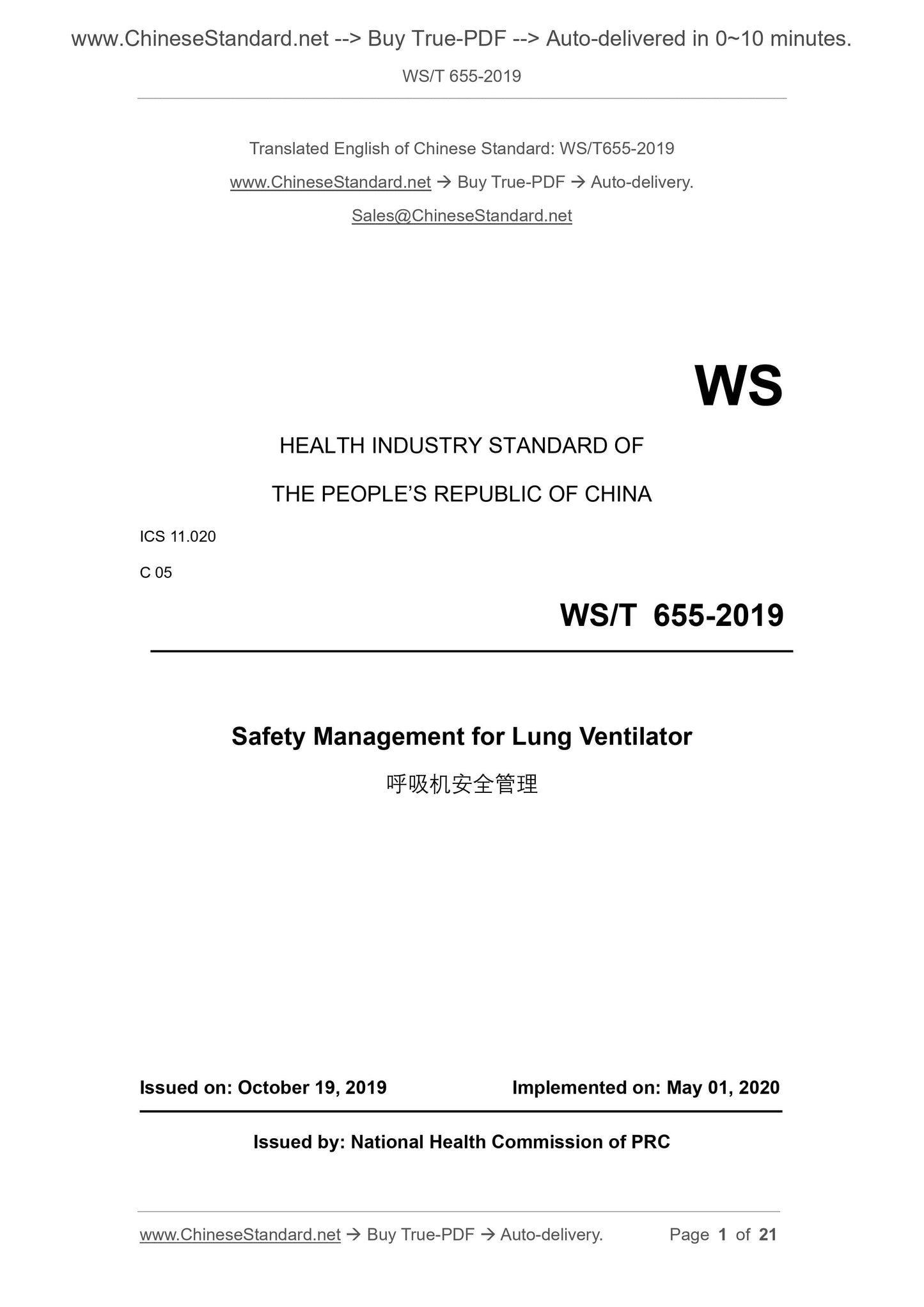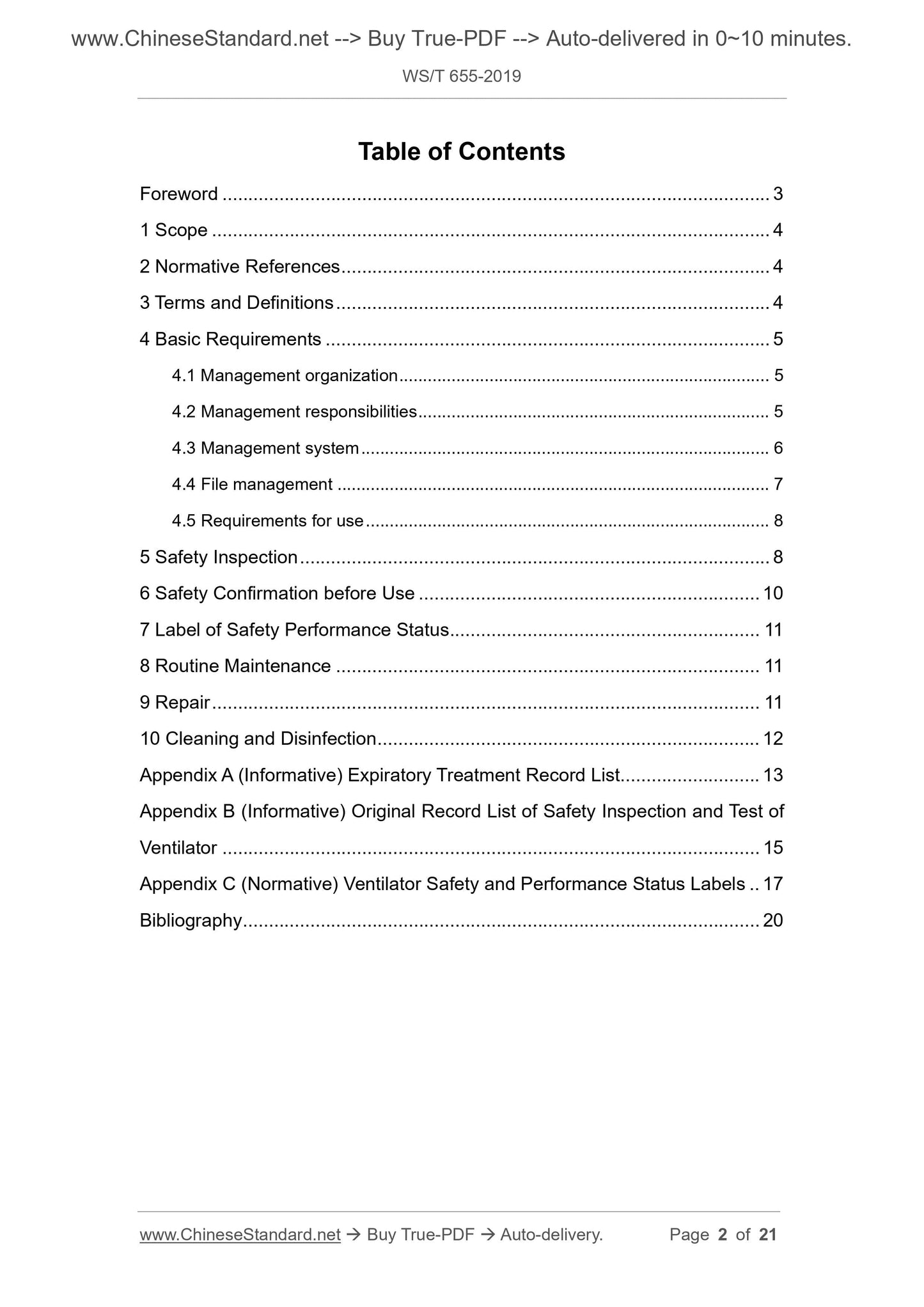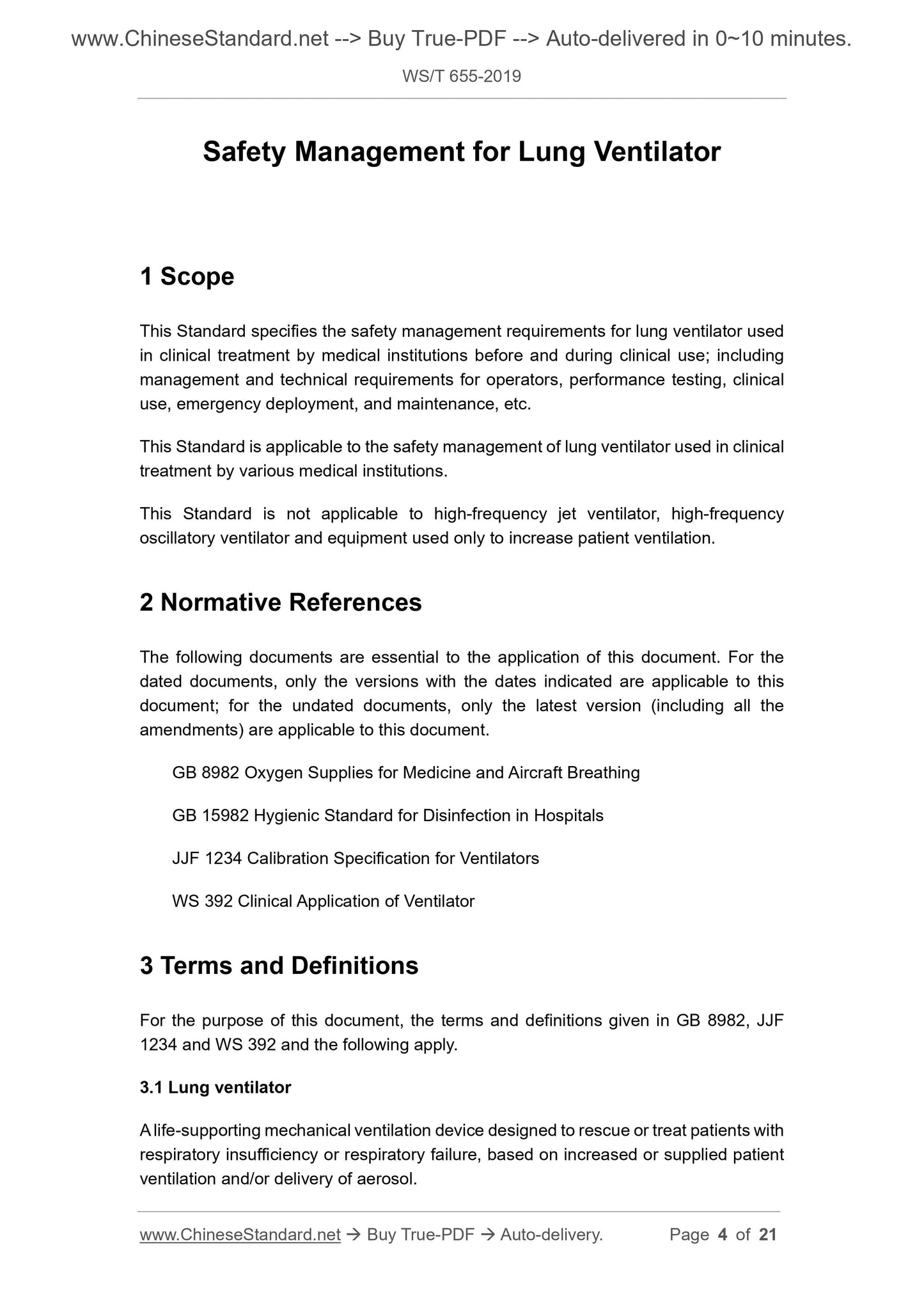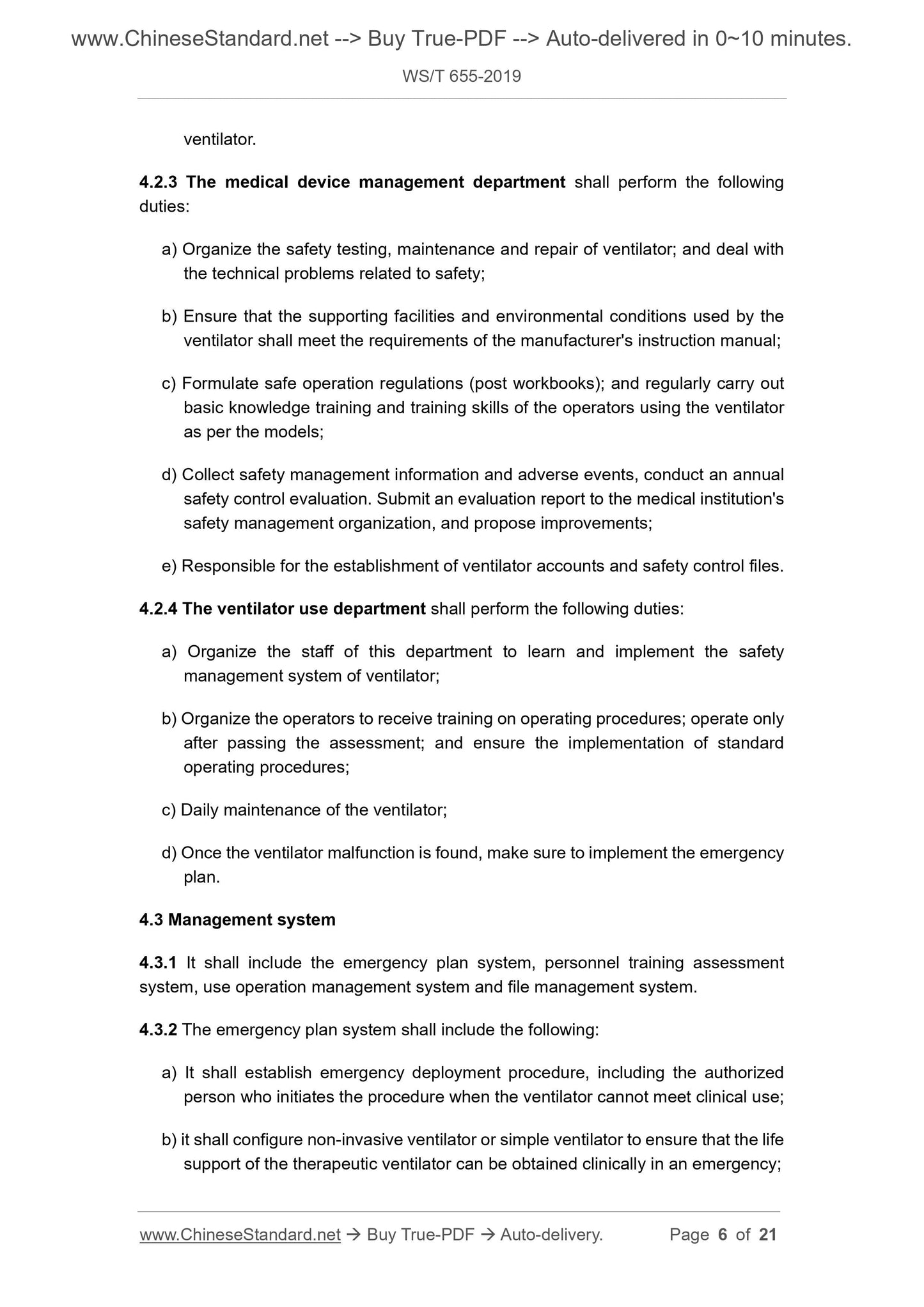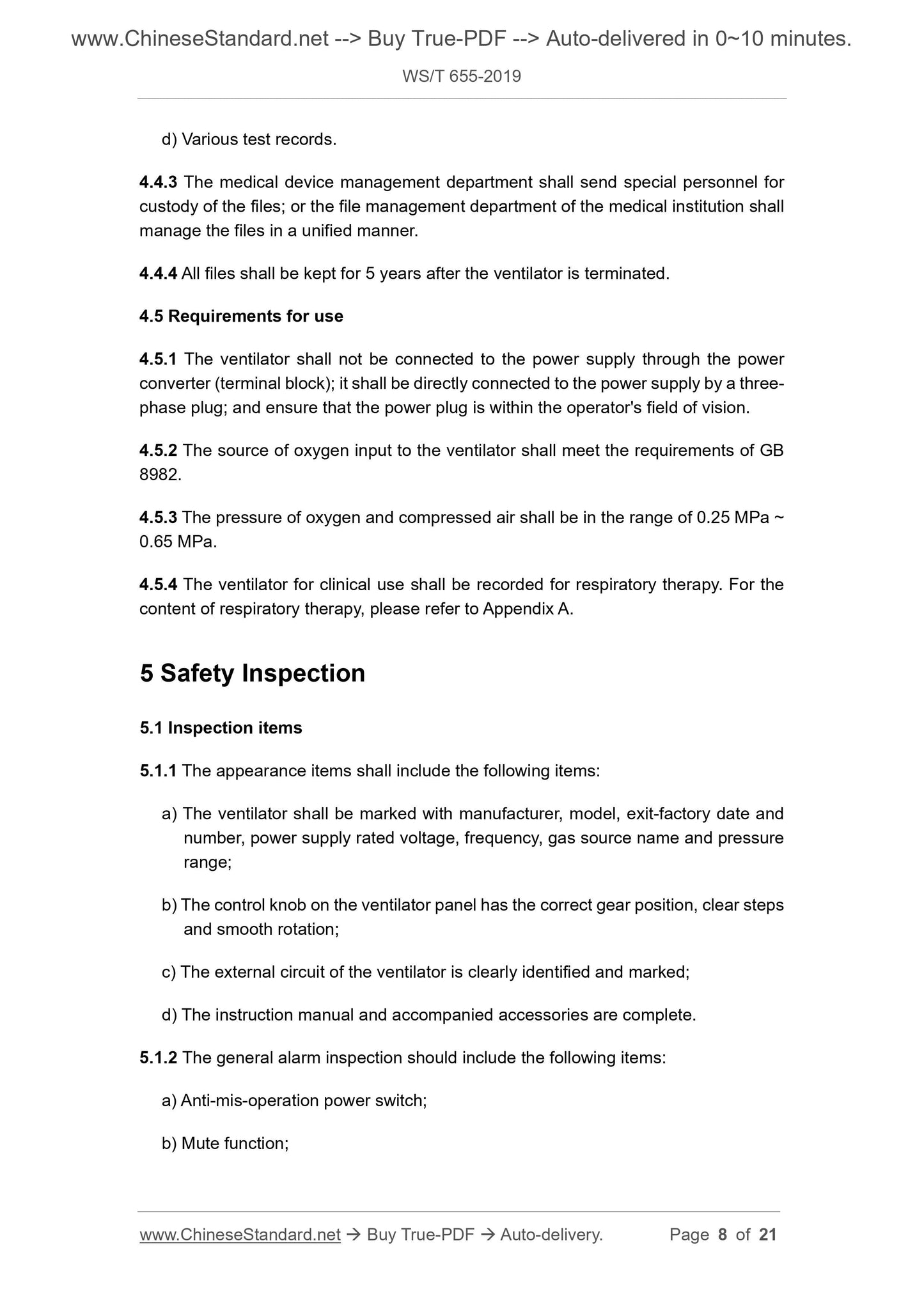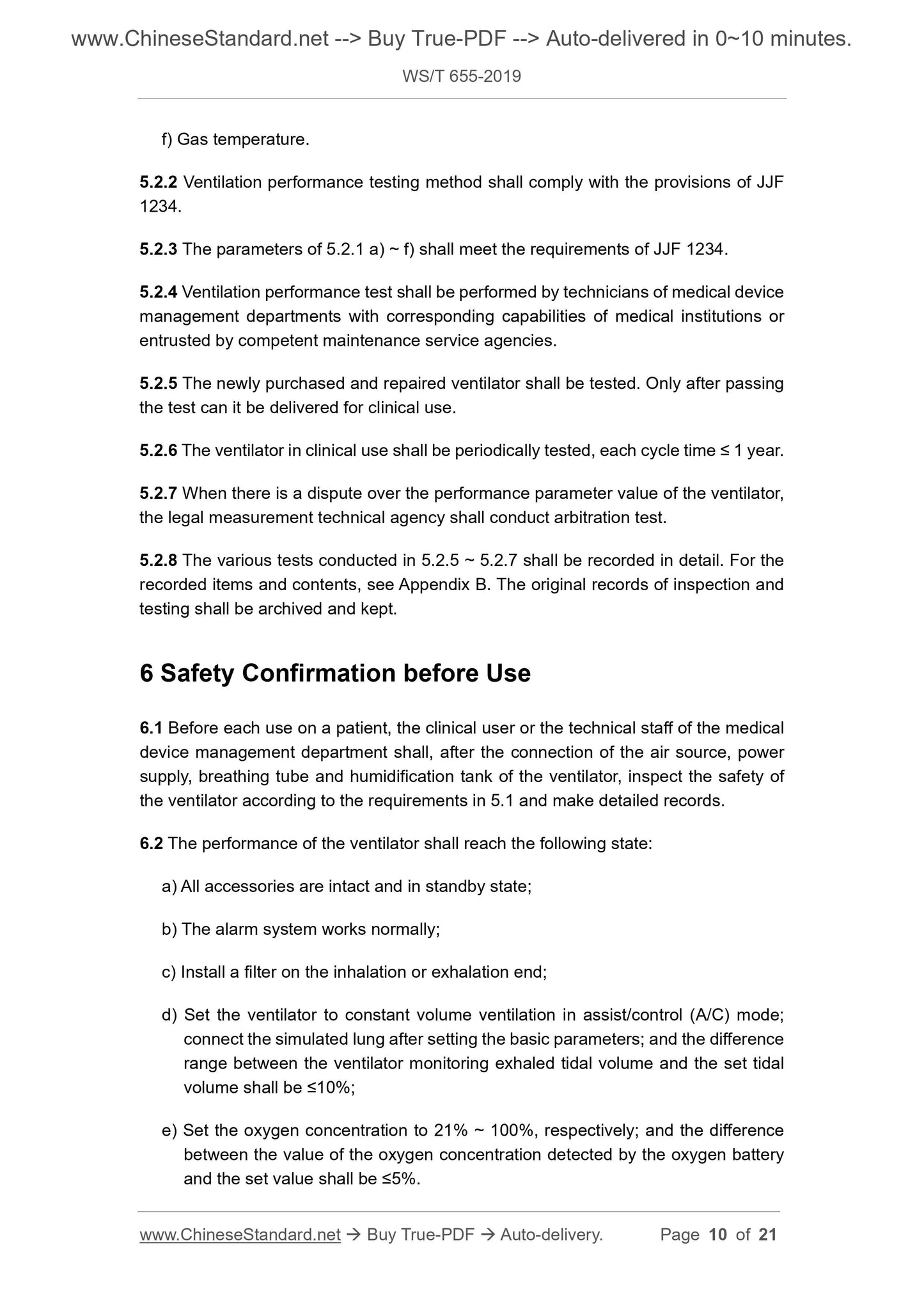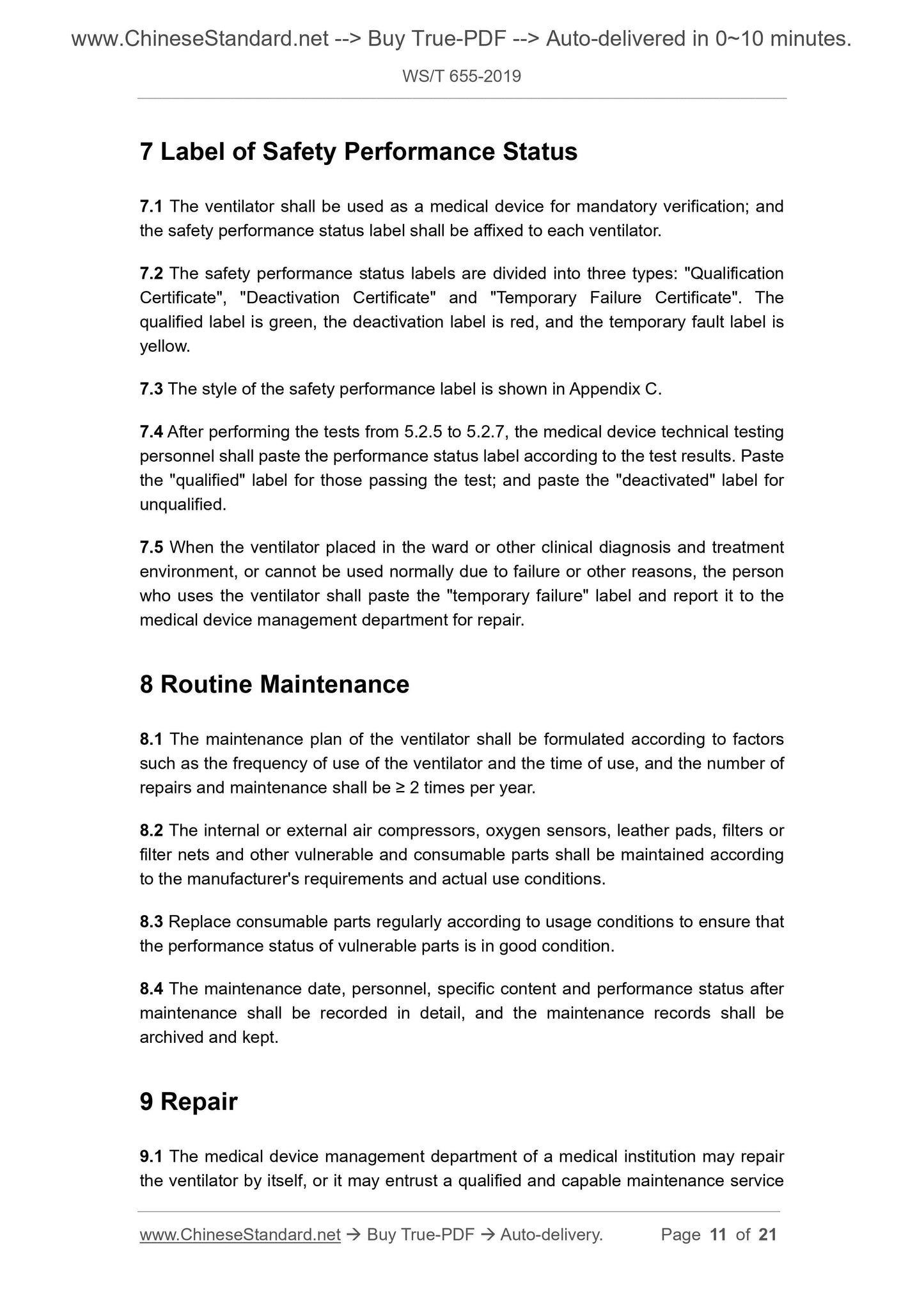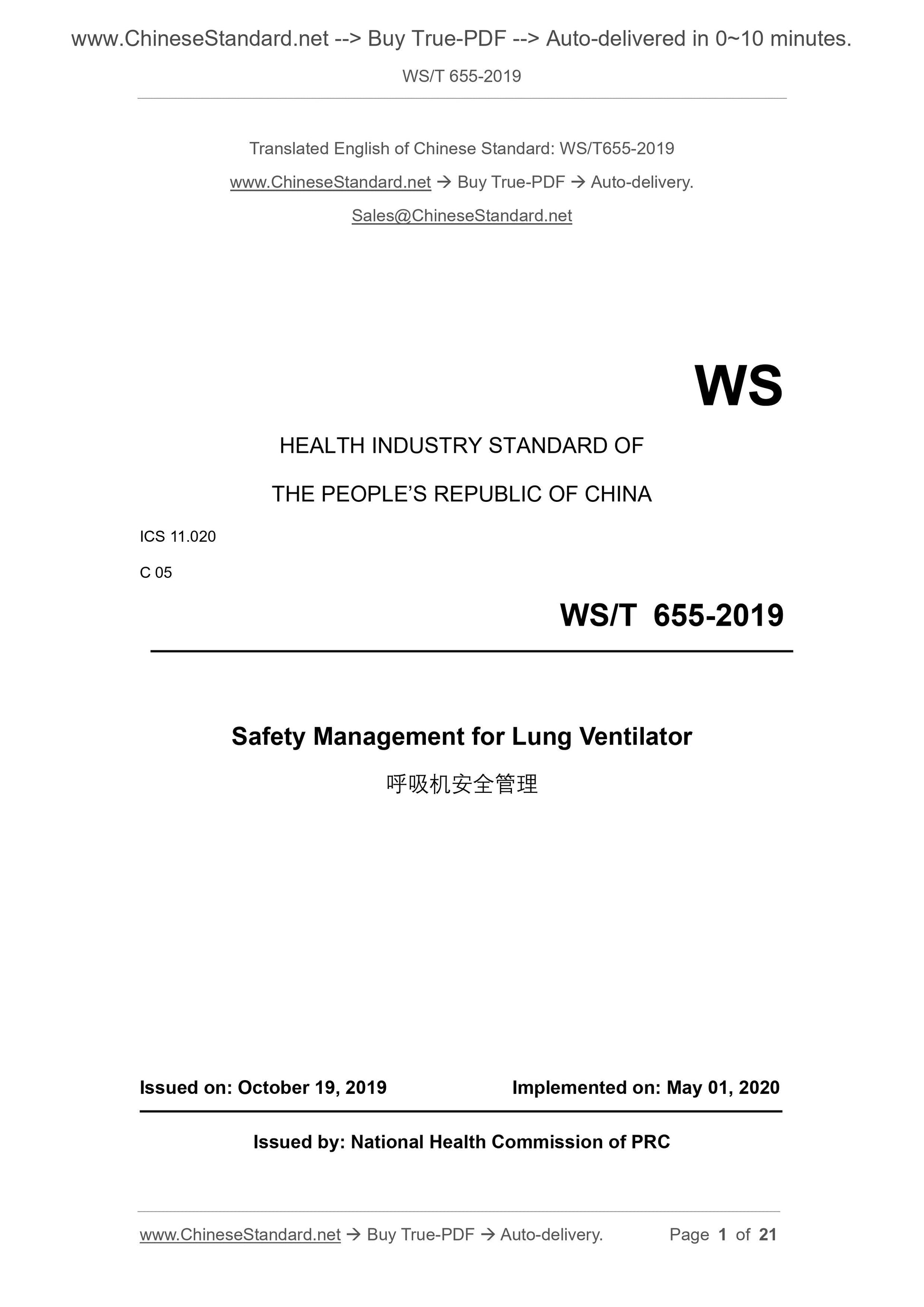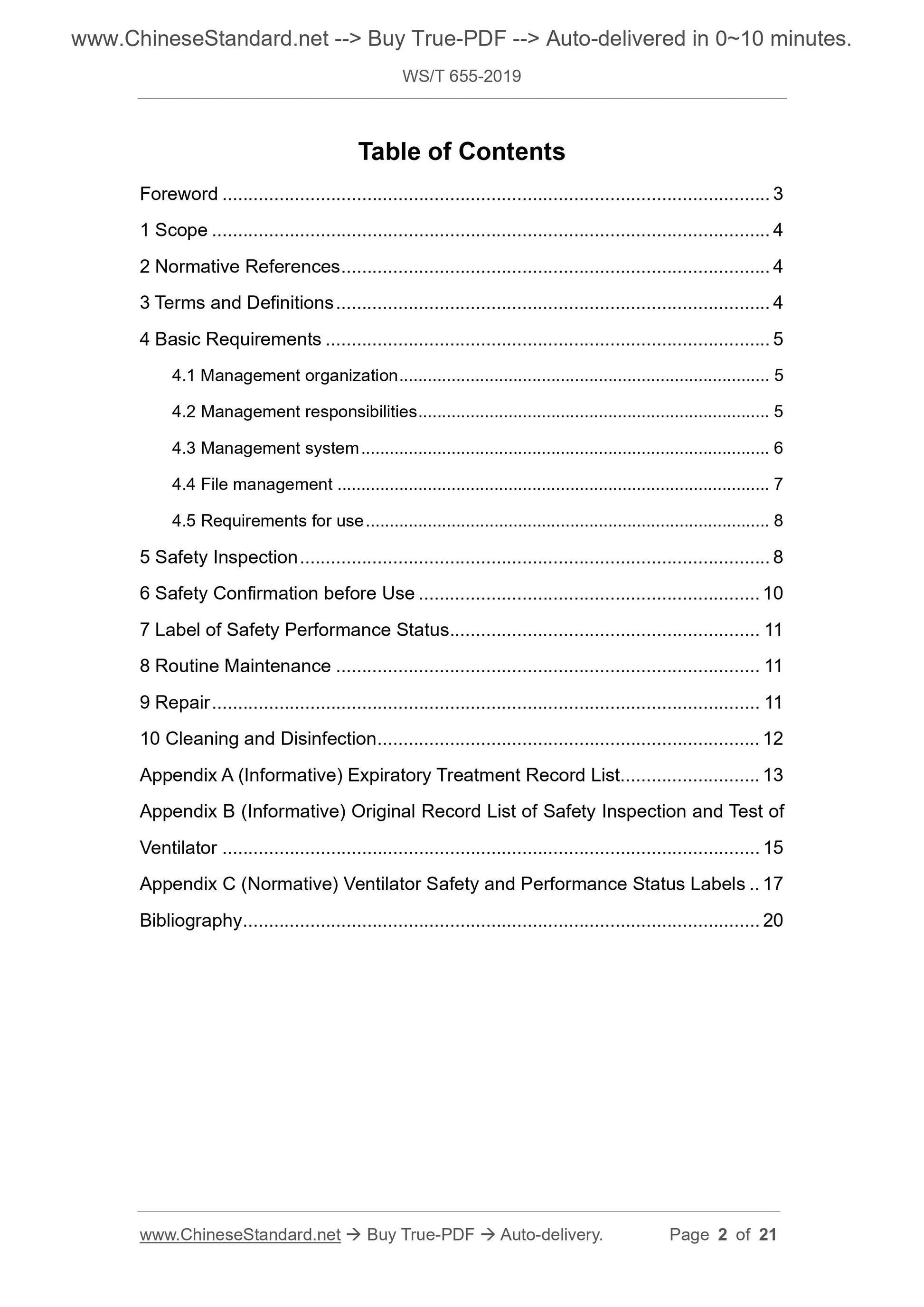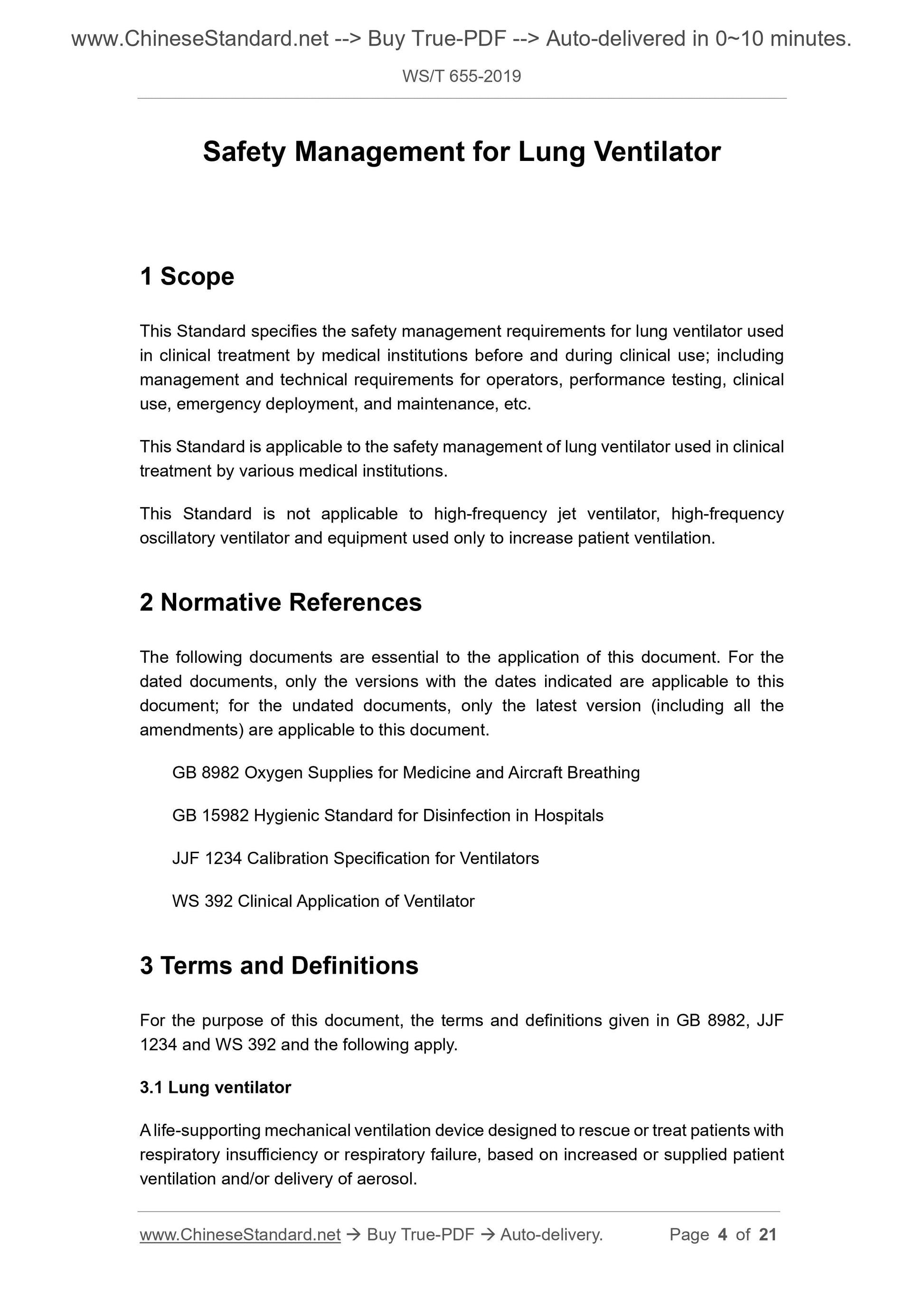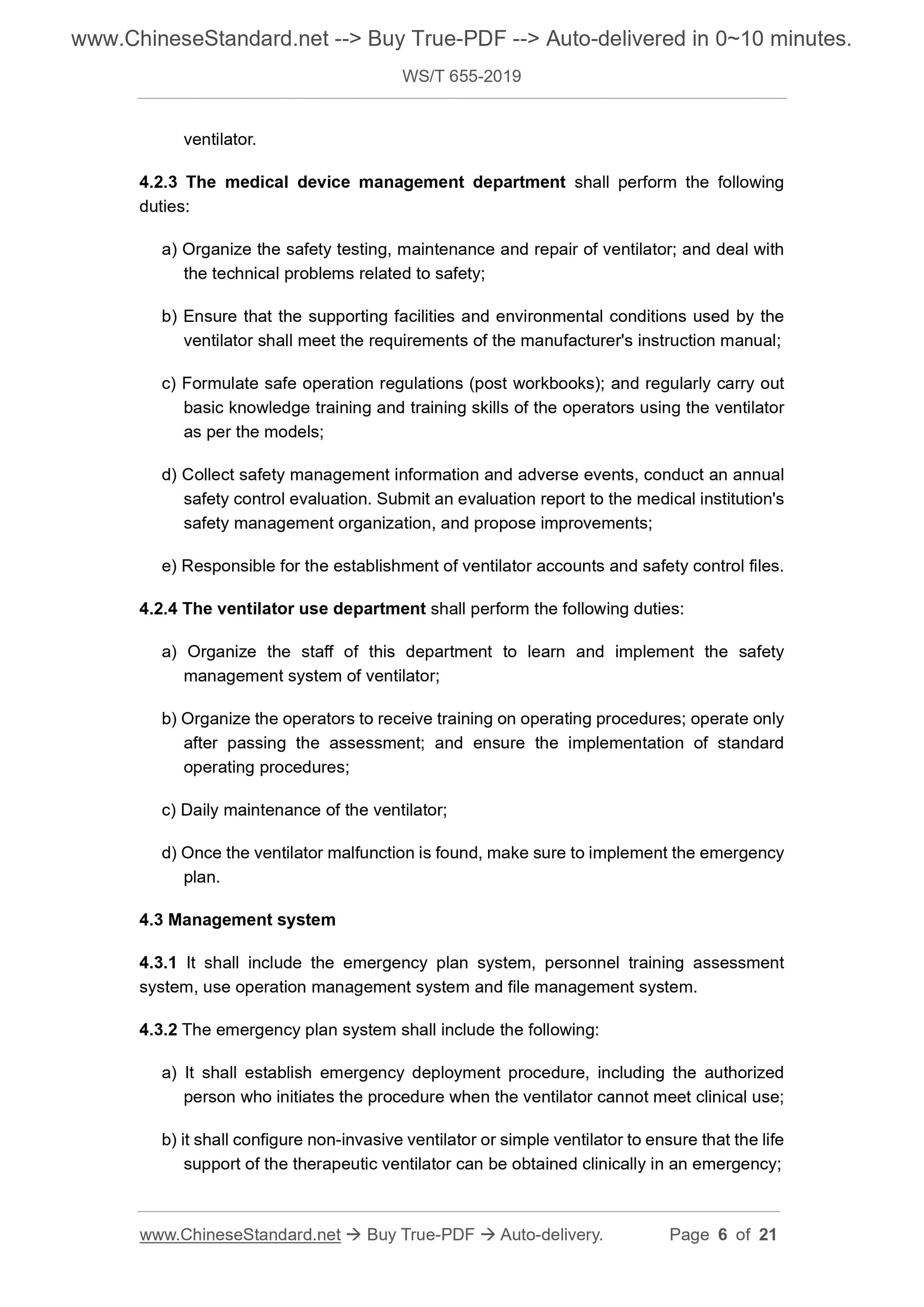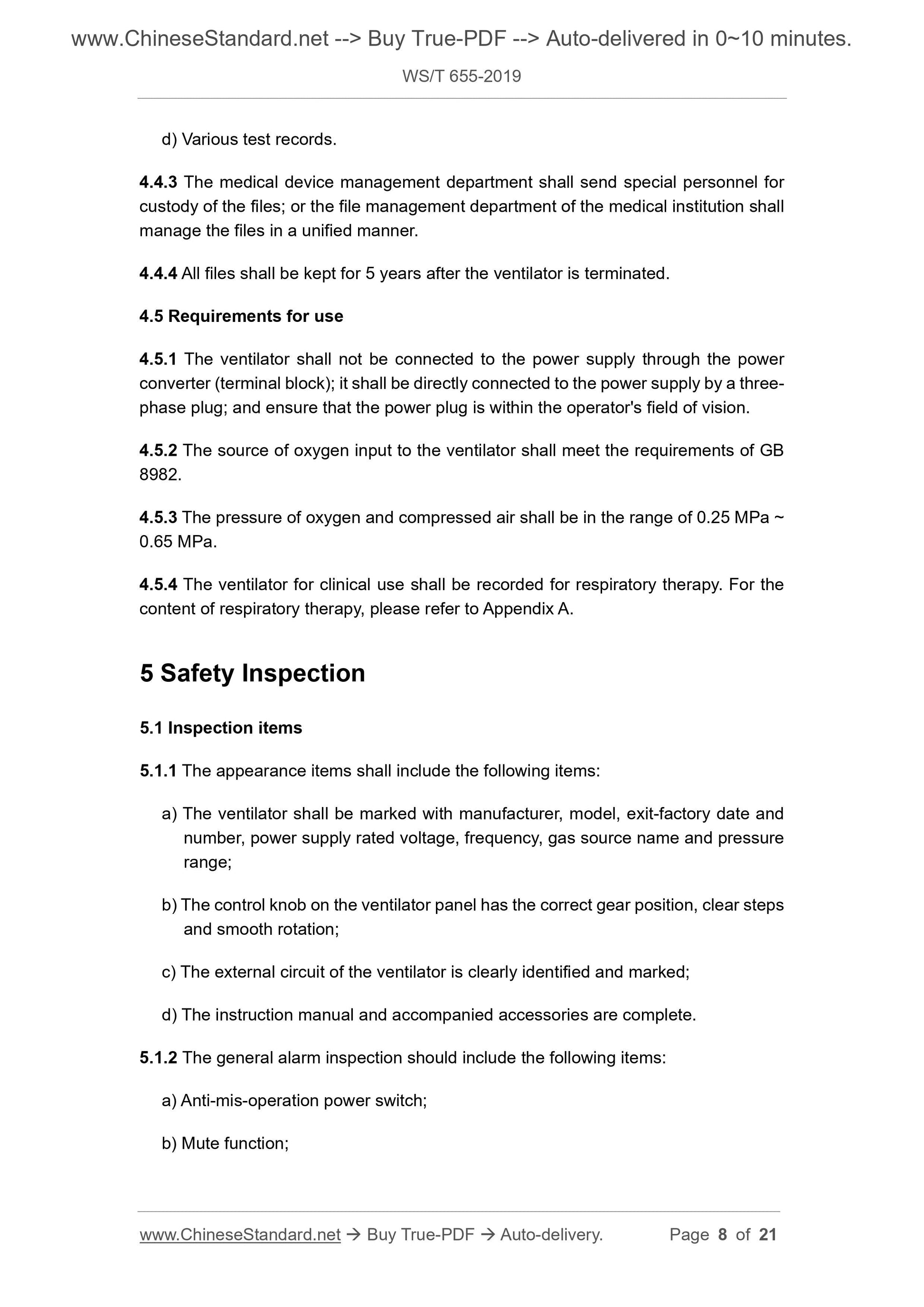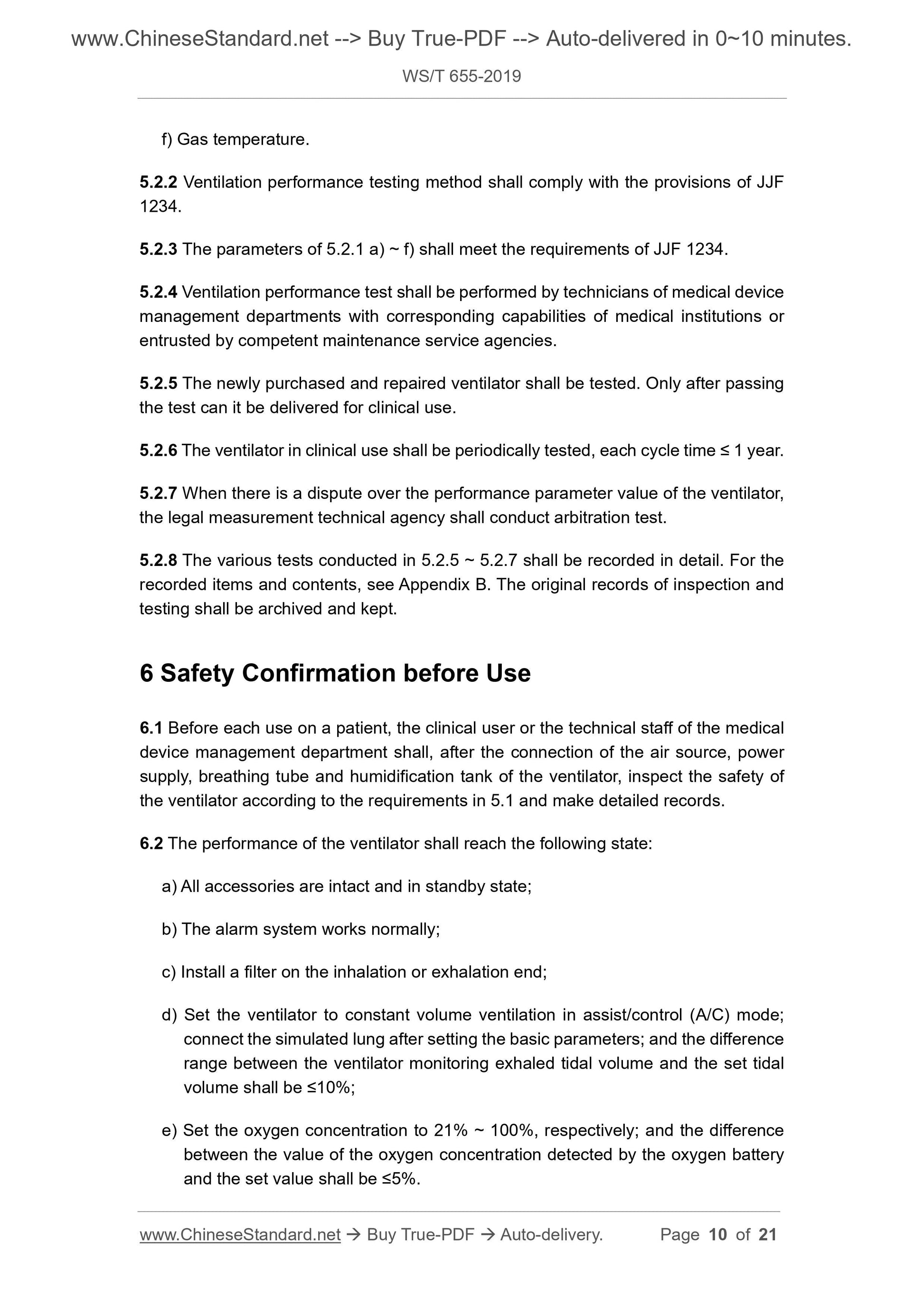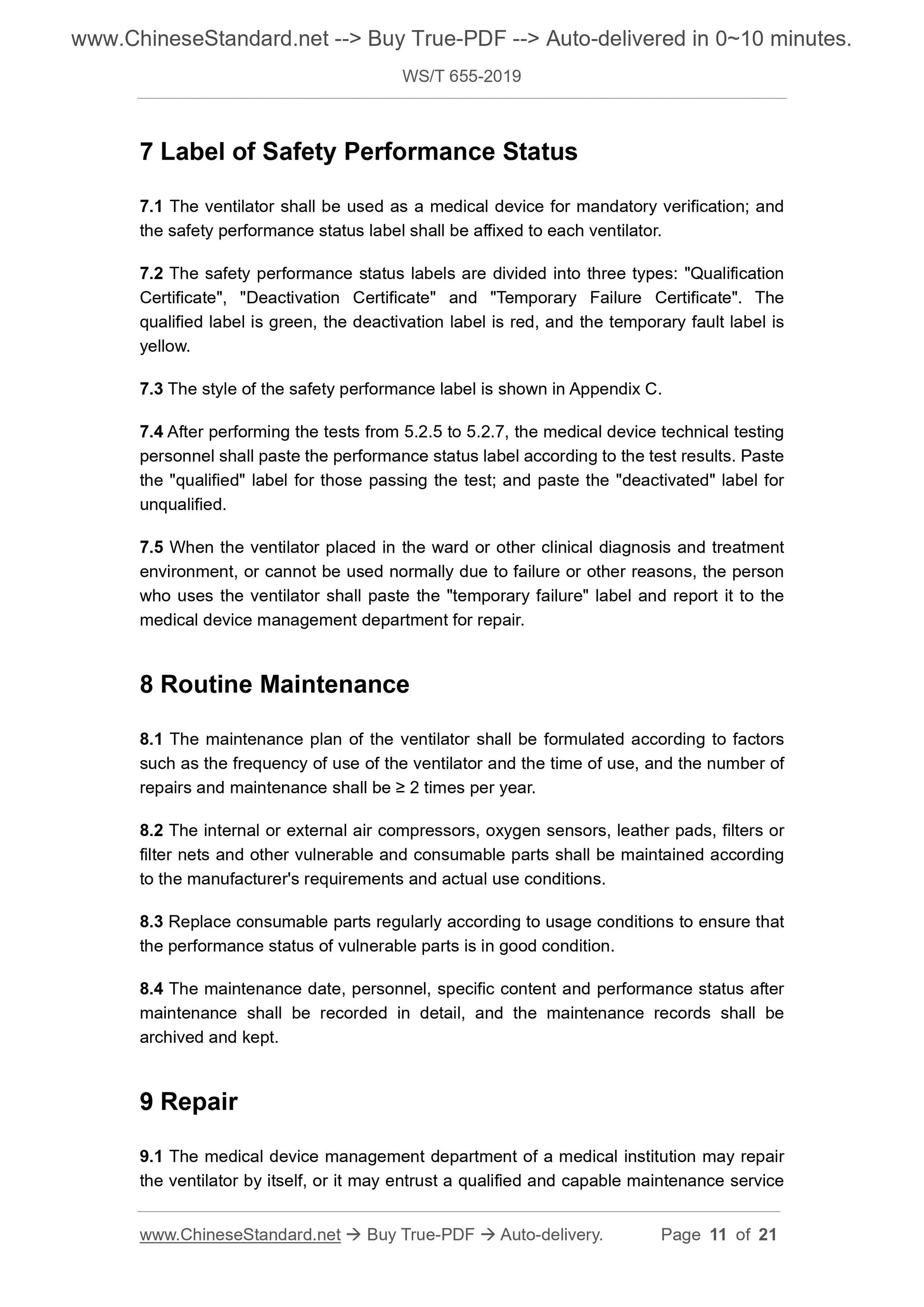1
/
of
7
www.ChineseStandard.us -- Field Test Asia Pte. Ltd.
WS/T 655-2019 English PDF (WS/T655-2019)
WS/T 655-2019 English PDF (WS/T655-2019)
Regular price
$190.00
Regular price
Sale price
$190.00
Unit price
/
per
Shipping calculated at checkout.
Couldn't load pickup availability
WS/T 655-2019: Safety Management for Lung Ventilator
Delivery: 9 seconds. Download (and Email) true-PDF + Invoice.Get Quotation: Click WS/T 655-2019 (Self-service in 1-minute)
Newer / historical versions: WS/T 655-2019
Preview True-PDF
Scope
This Standard specifies the safety management requirements for lung ventilator usedin clinical treatment by medical institutions before and during clinical use; including
management and technical requirements for operators, performance testing, clinical
use, emergency deployment, and maintenance, etc.
This Standard is applicable to the safety management of lung ventilator used in clinical
treatment by various medical institutions.
This Standard is not applicable to high-frequency jet ventilator, high-frequency
oscillatory ventilator and equipment used only to increase patient ventilation.
Basic Data
| Standard ID | WS/T 655-2019 (WS/T655-2019) |
| Description (Translated English) | Safety Management for Lung Ventilator |
| Sector / Industry | Health Industry Standard (Recommended) |
| Classification of Chinese Standard | C05 |
| Classification of International Standard | 11.020 |
| Word Count Estimation | 16,188 |
| Date of Issue | 2019 |
| Date of Implementation | 2020-05-01 |
| Issuing agency(ies) | National Health Commission |
Share
